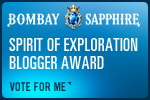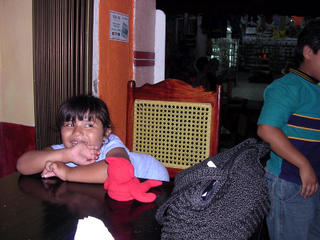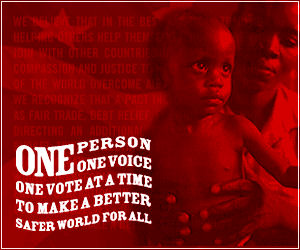When Christian fundamentalists refer to those who do not believe as they do as secular humanists, many people have no idea what they are talking about. Here is the document that is the basis for humanism:
Humanist Manifesto I (1933)
The time has come for widespread recognition of the radical changes in religious beliefs throughout the modern world. The time is past for mere revision of traditional attitudes. Science and economic change have disrupted the old beliefs. Religions the world over are under the necessity of coming to terms with new conditions created by a vastly increased knowledge and experience. In every field of human activity, the vital movement is now in the direction of a candid and explicit humanism. In order that religious humanism may be better understood we, the undersigned, desire to make certain affirmations which we believe the facts of our contemporary life demonstrate.
There is great danger of a final, and we believe fatal, identification of the word religion with doctrines and methods which have lost their significance and which are powerless to solve the problem of human living in the Twentieth Century. Religions have always been means for realizing the highest values of life. Their end has been means for realizing the highest values of life. Their end has been accomplished through the interpretation of the total environing situation (theology or world view), the sense of values resulting therefrom (goal or ideal), and the technique (cult) established for realizing the satisfactory life. A change in any of these factors results in alteration of the outward forms of religion. This fact explains the changefulness of religions through the centuries. But through all changes religion itself remains constant in its quest for abiding values, an inseparable feature of human life.
Today man's larger understanding of the universe, his scientific achievements, and his deeper appreciation of brotherhood, have created a situation which requires a new statement of the means and purposes of religion. Such a vital, fearless, and frank religion capable of furnishing adequate social goals and personal satisfactions may appear to many people as a complete break with the past. While this age does owe a vast debt to traditional religions, it is none the less obvious that any religion that can hope to be a synthesizing and dynamic force for today must be shaped for the needs of this age. To establish such a religion is a major necessity of the present. It is a responsibility which rests upon this generation. We therefore affirm the following:
First: Religious humanists regard the universe as self-existing and not created.
Second: Humanism believes that man is a part of nature and that he has emerged as the result of a continuous process.
Third: Holding an organic view of life, humanists find that the traditional dualism of mind and body must be rejected.
Fourth: Humanism recognizes that man's religious culture and civilization, as clearly depicted by anthropology and history, are the product of a gradual development due to his interaction with his natural environment and with his social heritage. The individual born into a particular culture is largely molded to that culture.
Fifth: Humanism asserts that the nature of the universe depicted by modern science makes unacceptable any supernatural or cosmic guarantees of human values. Obviously humanism does not deny the possibility of realities as yet undiscovered, but it does insist that the way to determine the existence and value of any and all realities is by means of intelligent inquiry and by the assessment of their relation to human needs. Religion must formulate its hopes and plans in the light of the scientific spirit and method.
Sixth: We are convinced that the time has passed for theism, deism, modernism, and the several varieties of "new thought."
Seventh: Religion consists of those actions, purposes, and experiences which are humanly significant. Nothing human is alien to the religious. It includes labor, art, science, philosophy, love, friendship, recreation--all that is in its degree expressive of intelligently satisfying human living. The distinction between the sacred and the secular can no longer be maintained.
Eighth: Religious humanism considers the complete realization of human personality to be the end of man's life and seeks its development and fulfillment in the here and now. This is the explanation of the humanist's social passion.
Ninth: In place of the old attitudes involved in worship and prayer the humanist finds his religious emotions expressed in a heightened sense of personal life and in a cooperative effort to promote social well being.
Tenth: It follows that there will be no uniquely religious emotions and attitudes of the kind hitherto associated with belief in the supernatural.
Eleventh: Man will learn to face the crises of life in terms of his knowledge of their naturalness and probability. Reasonable and manly attitudes will be fostered by education and supported by custom. We assume that humanism will take the path of social and mental hygiene and discourage sentimental and unreal hopes and wishful thinking.
Twelfth: Believing that religion must work increasingly for joy in living, religious humanists aim to foster the creative in man and to encourage achievements that add to the satisfactions of life.
Thirteenth: Religious humanism maintains that all associations and institutions exist for the fulfillment of human life. The intelligent evaluation, transformation, control, and direction of such associations and institutions with a view of the enhancement of human life is the purpose and program of humanism. Certainly religious institutions, their ritualistic forms, ecclesiastical methods, and communal activities must be reconstituted as rapidly as experience allows, in order to function effectively in the modern world.
Fourteenth: The humanists are firmly convinced that existing acquisitive and profit-motivated society has shown itself to be inadequate and that a radical change in methods, controls, and motives must be instituted. A socialized and cooperative economic order must be established to the end that the equitable distribution of the means of life be possible. The goal of humanism is a free and universal society in which people voluntarily and intelligently cooperate for the common good. Humanists demand a shared life in a shared world.
Fifteenth and last: We assert that humanism will: (a) affirm life rather than deny it; (b) seek to elicit the possibilities of life, not flee from it; and (c) endeavor to establish the conditions of a satisfactory life for all, not merely for the few. By this positive morale and intention humanism will be guided, and from this perspective and alignment the techniques and efforts of humanism will flow.
So stand the theses of religious humanism. Though we consider the religious form and ideas of our fathers no longer adequate the quest for the good life is still the central task for mankind. Man is at last becoming aware that he alone is responsible for the realization of the world of his dreams, that he has within himself the power for its achievement. He must set intelligence and will to the task.
(Those signing Humanist Manifesto I included John Dewey, the father of modern education.)

 Raising Charlie: The Lessons of a Perfect Dog
Raising Charlie: The Lessons of a Perfect Dog









